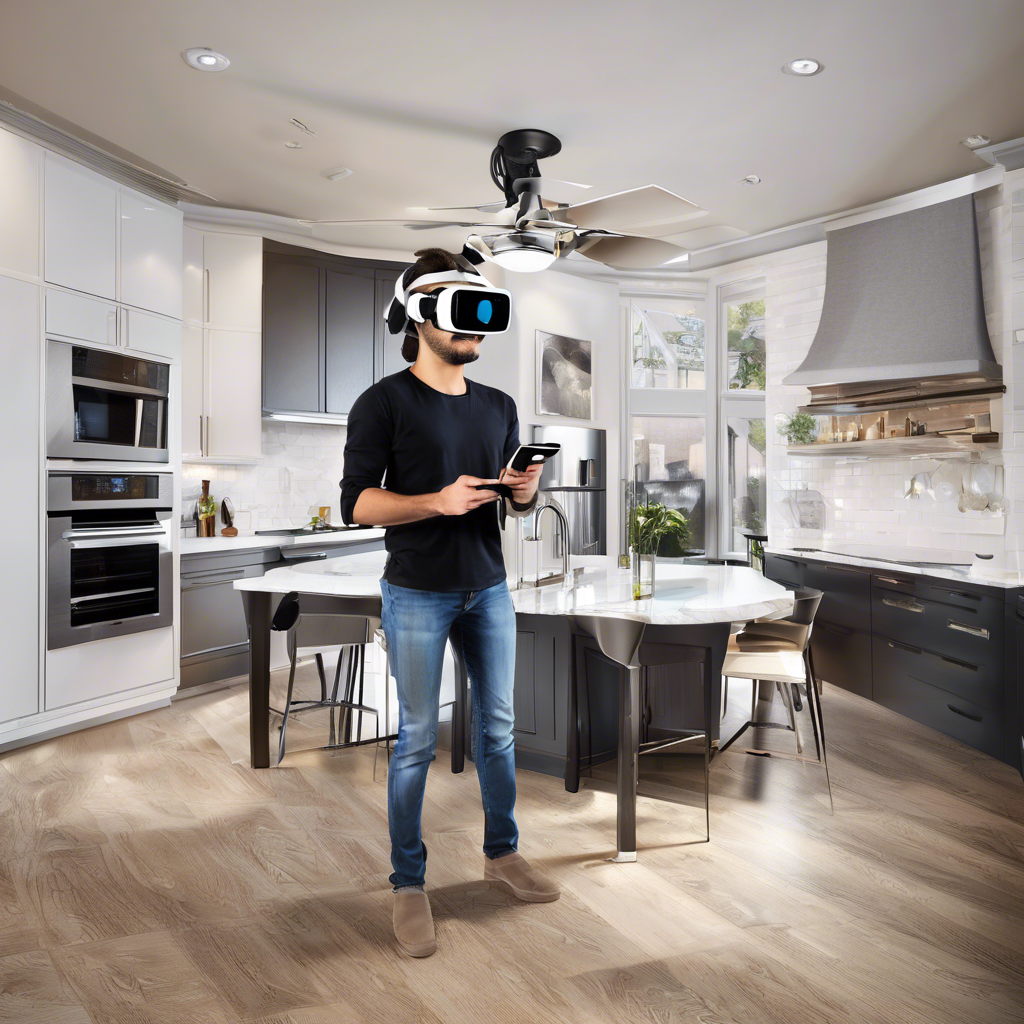The real estate industry is undergoing a technological revolution, and virtual reality (VR) is at the forefront of this transformation. Traditionally, homebuyers and investors needed to visit multiple properties in person to evaluate their options. This process was time-consuming, expensive, and often limited to local opportunities. However, VR technology is changing the way people explore properties by providing immersive virtual tours that allow buyers to experience homes from anywhere in the world. This innovation is not only making property viewing more efficient but also opening up new possibilities for international buyers, real estate agents, and developers.
One of the most significant advantages of VR in real estate is convenience. Buyers no longer need to schedule multiple physical visits to different properties. Instead, they can tour homes virtually, walking through every room and experiencing the space as if they were there. This saves time for both buyers and real estate agents, streamlining the home-search process. With high-quality 3D imaging and interactive features, VR tours provide a realistic representation of a property, helping buyers make more informed decisions before committing to an in-person visit.
For real estate agents and brokers, VR technology is a game-changer. Instead of organizing countless open houses, agents can offer virtual tours to multiple potential buyers simultaneously. This means agents can cater to more clients without being physically present at each property. Additionally, VR technology helps filter out unqualified buyers who may lose interest after a virtual tour, reducing unnecessary site visits and allowing agents to focus on serious buyers. By integrating VR into their marketing strategies, agents can attract more clients and close deals faster.
Developers and architects are also benefiting from VR by using it in the pre-construction phase. Traditionally, potential buyers had to rely on blueprints, 2D images, or model homes to visualize their future property. Now, with VR, developers can create immersive 3D walkthroughs of unfinished projects, allowing buyers to experience the space before it is even built. This helps developers secure pre-sales and generate interest in new construction projects. Buyers can explore different layout options, visualize interior designs, and even make customization requests—all before construction begins.
International buyers are another group that greatly benefits from VR real estate tours. In the past, purchasing property from overseas required extensive travel, which was not always feasible. With VR, buyers can explore properties remotely, narrowing down their options before deciding to visit in person. This technology makes it easier for international investors to participate in real estate markets across the globe, expanding opportunities for buyers and sellers alike. For luxury real estate, where buyers are often located in different countries, VR has become an essential tool for showcasing high-end properties.
One of the most exciting aspects of VR in real estate is the ability to customize virtual tours. Advanced VR platforms allow users to interact with the space by changing wall colors, flooring materials, or furniture layouts. This feature gives buyers a sense of ownership and helps them visualize the potential of a property. For developers, this means they can offer multiple design options without physically renovating a space. Homebuyers can experiment with different interior styles and see how their preferred choices will look before making final decisions.
The rental market is also benefiting from VR technology. Landlords and property managers are using VR tours to attract tenants, reducing the need for physical showings. This is particularly useful for short-term rentals and vacation properties, where potential renters want to see the space before booking. With VR, they can explore the property in detail and feel confident in their decision. This has led to faster leasing processes and higher occupancy rates for rental properties.
In addition to convenience, VR real estate tours provide a safer way to explore properties. The COVID-19 pandemic highlighted the need for contactless solutions, and VR became an essential tool for continuing property sales during lockdowns. Even as restrictions eased, many buyers and sellers continued to prefer virtual tours due to their efficiency and safety. Elderly buyers, people with mobility issues, and busy professionals can now tour properties without the need to travel, making the home-buying process more inclusive and accessible.
Real estate companies are investing heavily in VR technology, integrating it with artificial intelligence (AI) and augmented reality (AR) for an even more immersive experience. AI-powered chatbots and virtual assistants can guide buyers through a tour, answering questions and providing detailed property information in real time. Augmented reality features allow buyers to add or remove virtual furniture, making it easier to see how a space will function for their needs. As these technologies continue to evolve, the real estate experience will become even more interactive and personalized.
Despite its many benefits, there are challenges to adopting VR in real estate. High-quality VR tours require advanced equipment and software, which can be expensive for smaller real estate firms. Additionally, not all buyers are familiar with VR technology, and some may prefer traditional in-person visits. However, as VR becomes more mainstream and accessible, these barriers are likely to diminish. Companies that invest in VR early will gain a competitive advantage, attracting tech-savvy buyers and staying ahead of industry trends.
The future of real estate is undoubtedly digital, and VR is playing a major role in this transformation. As technology continues to advance, we can expect even more sophisticated virtual tours with enhanced realism, interactive elements, and AI-driven recommendations. The convenience, efficiency, and global reach of VR are revolutionizing how properties are bought, sold, and rented. For buyers, agents, and developers, embracing VR technology is not just an option—it’s becoming a necessity in the modern real estate market.

